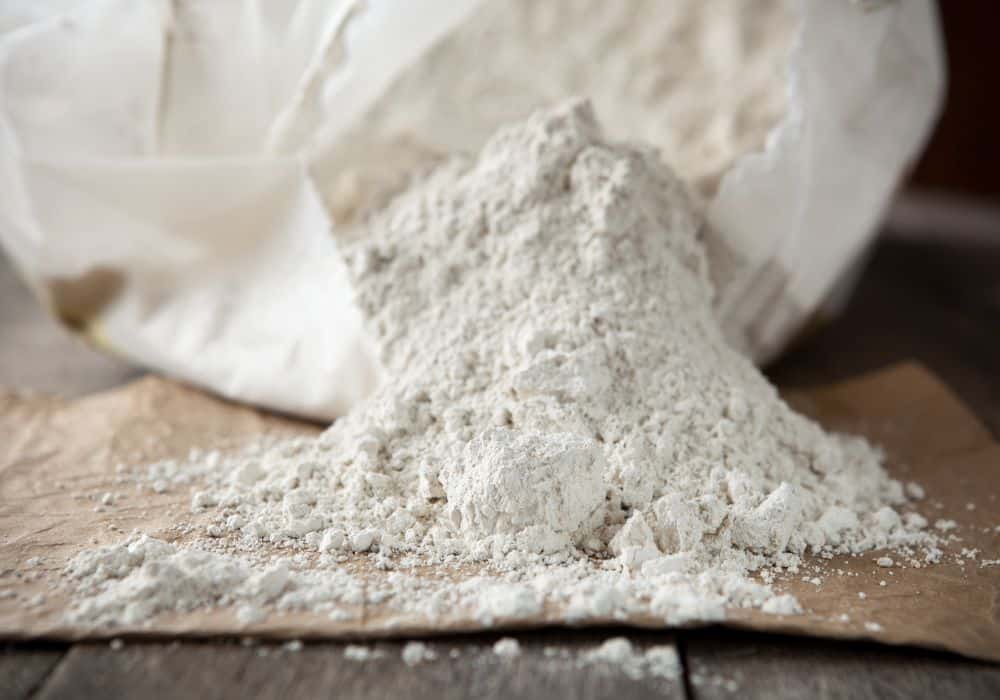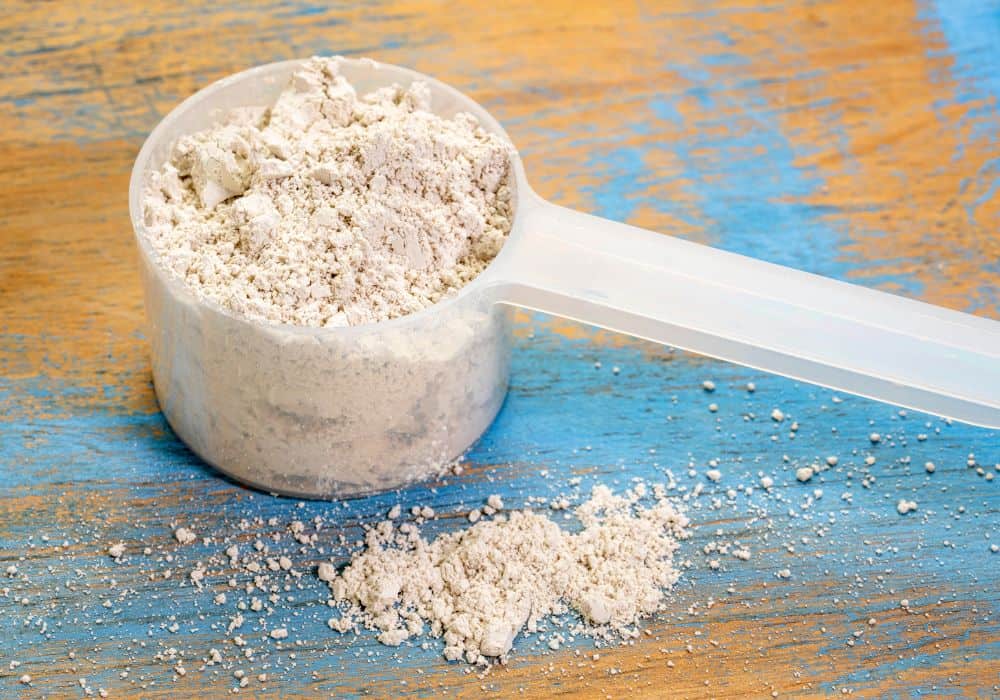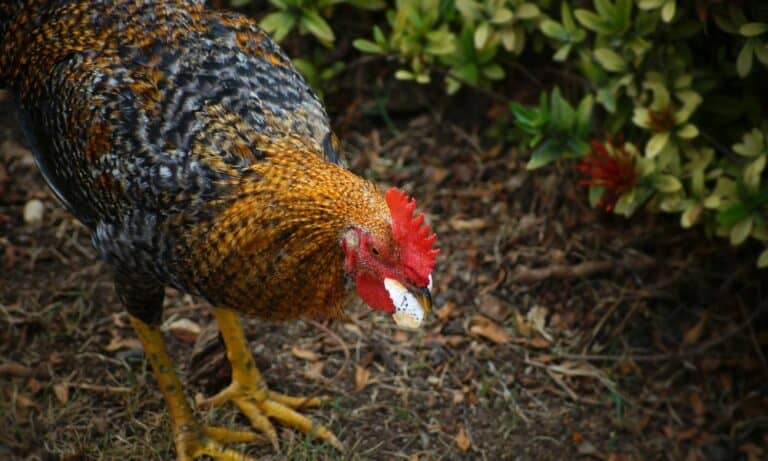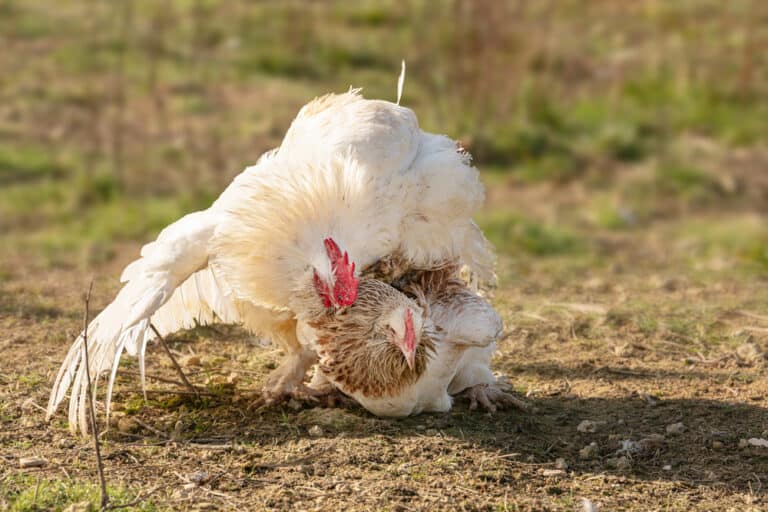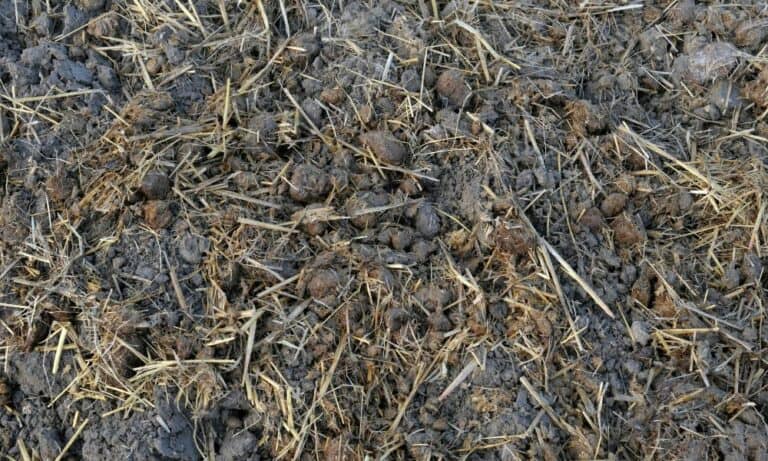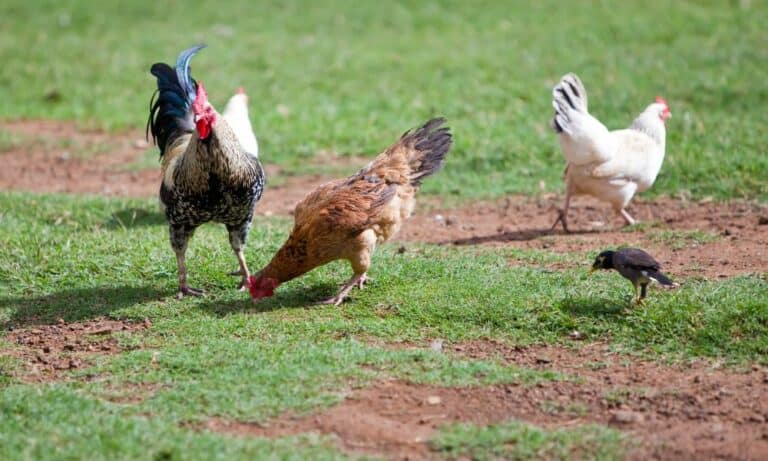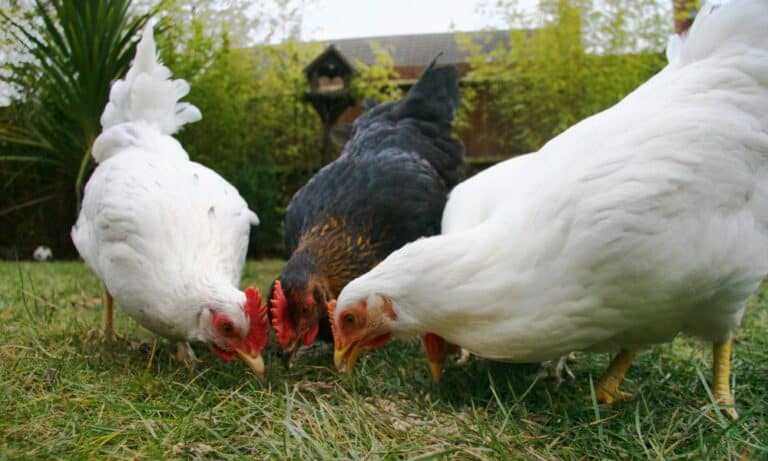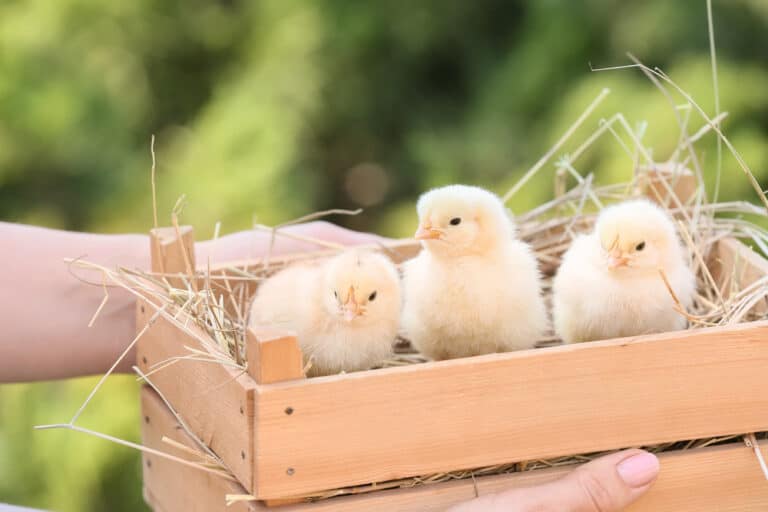Although diatomaceous earth has been around for a long time, its popularity in agriculture has been on the rise only in recent times. The possibility of using it as an insecticide, among other things, has prompted many people to learn how to utilize diatomaceous earth for chickens and other types of poultry.
But what is diatomaceous earth exactly? What types of diatomaceous earth are out there? Why can it be used as an insecticide? How to use it on our chickens?
In this article, we will discuss all of that and much more!
What is diatomaceous earth?
What we call diatomaceous earth (DE) are the shells of ancient algae called diatoms, and they can be found today in the form of fine flint sediment.
It was formed over millions of years due to the fossilization of a huge number of flint algae at the bottom of lakes and oceans. Since many of those lakes and oceans have dried up, diatomite sediments can easily be mined by open pit methods or quarrying.
Diatomaceous earth is sold and used in powder form and can be found in several colors, such as white, cream, gray, brown, yellow, and even red. The color of diatomaceous earth depends on its composition, i.e., the variety and amount of minerals it contains.
For example, white diatomaceous earth is almost entirely composed of silicon dioxide. Other minerals appear only in tiny amounts.
However, it is important to point out that the color of the diatomaceous earth does not affect its effectiveness.
What are the usage cases of diatomaceous earth?
Although the vast majority of people have not heard of diatomaceous earth, its versatility and use seem to know no limits.
Since it has a high absorption power, it is used for filtering water, oil, and various chemicals. It can be utilized to improve soil quality because it helps it maintain nutrients and moisture and improve oxygenation.
Diatomaceous earth can also be used as a natural deodorant, abrasive cleaner, ingredient in toothpaste, skin, hair, and nail agent, and as a carrier in various powder products.
The last application case of this very ecologically efficient way of protection we will mention is its use as an insecticide.
The insecticidal property is actually the main topic of this article, and it will be discussed in more detail later in the article.
For now, we should point out that this product is very interesting in protecting against insects in growing plants, storing products, disinfecting our homes from fleas and bedbugs, protecting chickens and their coops from mites and bugs, and protecting pets from various pests.
Is diatomaceous earth safe for use on chickens?
You might be surprised to read the questions above just moments after we told you all about many of the application cases of this amazing natural substance. How could something so beneficial be harmful to chickens?
Diatomaceous earth is a concentrated form of silicon dioxide, also called silica. Silica is divided into two main groups – crystalline and amorphous, which is also called non-crystalline.
One of the differences between these two groups (and crystalline and amorphous solids in general) is that crystalline silica has well-defined edges and faces, while amorphous silica has irregular or curved surfaces.
Another difference between these two silica groups is that the crystalline one is much smaller than the amorphous one.
Due to these two factors, crystalline silica stays in the chickens’ bodies much longer, which can have bad consequences for their health.
In fact, long exposure and inhalation of crystalline silicon dioxide have been linked with diseases such as lung cancer, kidney diseases, autoimmune diseases, chronic obstructive pulmonary disease, and silicosis.
The link between crystalline silica and disease risk has not only been observed in studies done on animals such as rats and mice but also by examining the health of workers who, for many years, inhaled particles of crystalline silica.
On the other hand, inhalation of amorphous silica is not associated with the development of lung or other cancer, or with other diseases we mentioned previously, which means that diatomaceous earth containing this amorphous silica can be used on chickens.
Now that we have gotten that out of the way, it is time to learn how to find the right diatomaceous earth for our hens!
Which type of diatomaceous earth is suitable for use on chickens?
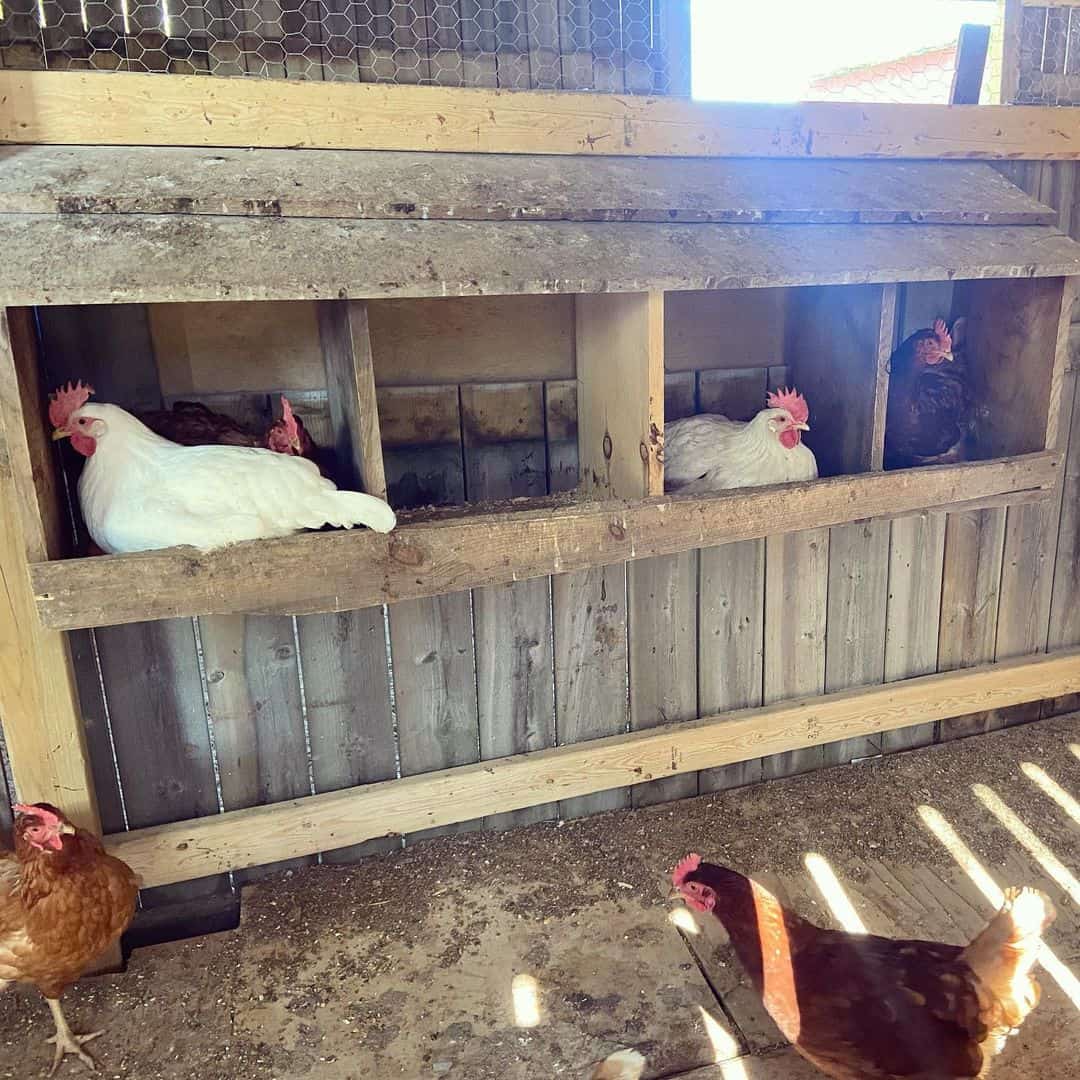
Depending on the amount of crystalline silica it contains, diatomaceous earth can be found in two main grades: food and filter/pool grade.
1. Food-grade diatomaceous earth
Food-grade DE contains less than 2 percent crystalline. It is used in the agricultural and food industry, which is why it is suitable for use on chickens and other types of animals.
The vast majority of the remaining 98% is amorphous silica, while a smaller part consists of trace minerals.
2. Filter/pool grade diatomaceous earth
Filter/pool grade DE earth contains over 50% crystalline silica and is most often used for filtering water. Due to the extremely high level of naughty silica, it is not suitable for use on chickens and other animals.
3. Feed-grade diatomaceous earth
There is also a third grade of diatomaceous earth called feed grade, which is suitable for use on animals but not on humans.
The difference between food and feed grade is not in the amount of crystalline silica because both contain less than 2 percent of crystalline silica but in the amount of heavy metals it contains.
In order for diatomaceous earth to be used in food, it must not contain more than 10 mg/kg of lead and 10 mg/kg of arsenic.
However, as people are paying more and more attention not only to their own health but also to the health of the animals they raise, many are switching to food grade DE, which is why feed grade is harder and harder to find.
Why is diatomaceous earth a good insecticide that should be used on chickens?
We told you that diatomaceous earth is great at dealing with insects, but we did not tell you why it is good at that task and why one should use it on their chickens. It is time to change that!
One of the most common problems chickens and chicken farmers face are pests such as Northern fowl mites, chicken mites (roost mites and red chicken mites), biting lice, bed bugs, blue bugs, scaly-leg mites, and Southern chicken fleas.
The chickens that get attacked by these tiny irritants become more nervous and stop growing and laying eggs, which is obviously not good for the chicken or the farmer.
Farmers use many different methods to battle them, but utilizing diatomaceous earth is one of the best because DE particles damage and remove the insect’s protective waxy layer, resulting in the insect losing water from its body and ultimately dying from dehydration.
The added benefit of using diatomaceous earth against insects is that they have not yet developed a tolerance against DE, which means you can utilize it whenever you are dealing with them without worrying about its efficacy.
How to use diatomaceous earth on chickens?
Enough with the theory – let’s do some practice! Before we tell you how to utilize diatomaceous earth and protect your hens, it is important to note that you should wear protective gloves and a dust mask when handling DE because it is known to irritate the skin.
1. Adding diatomaceous earth to dust baths
The first and simplest way to use diatomaceous earth is to add it to dust baths. As many of you know, dust baths are very important for hen health.
The soil that accumulates on the hen’s skin when it rubs its body into the ground penetrates through the feathers and binds to the red mites and other parasites, dead skin cells, and feathers and oils that need to be removed from the body.
Since dust baths are beneficial for the health of hens, they do it instinctively in the area where they live.
But in order for them to be able to do this continuously and effectively, they need loose soil. If the land where you raise chickens is not loose, you will have to provide them with a spot where they can bathe.
The advantage of this approach is that you can prepare any soil composition you like, which is what we need since it is much more efficient to add diatomaceous earth to the soil in a container than to the ground lying in the middle of the run or garden.
You can use an old tire, children’s pool, tub, wheelbarrow, smaller trash can, or wood crate as a container. You should make a bigger bathing site if the flock is a little bigger because it allows more chickens to enjoy the benefits of dust bathing simultaneously.
To prepare the mixture, use 2 parts of loose soil, 1 part sand, 1 part cooled wood ash, and 1/2 part diatomaceous earth.
2. Applying diatomaceous earth directly to chickens
In case your chickens are under a severe attack by pests, then applying diatomaceous earth directly to chickens is a more effective way to deal with the insects. (For the best results, we advise combining this method with the previous one.)
Mites, bugs, fleas, lice, and other pests that like to spend time as uninvited guests on chickens can usually be found around the vent area, under the wings, and on feather shafts, so make sure that you rub in DE onto those spots.
3. Dusting the chicken coop with diatomaceous earth
Mites and other menaces that mess with our hens tend to occupy not only their bodies but their living space, which is why you should dust the coop with diatomaceous earth. Applying DE in the coop is especially important when dealing with a large infestation.
By doing this, we interrupt the process of laying new eggs by the adults and destroy the mite broods. It may take some time to eradicate the pests completely, but the results are guaranteed if you use diatomaceous earth.
When using DE in the coop (or nesting boxes), you should be mindful of the fact that the pests tend to hide in cracks and crevices.
4. Adding diatomaceous earth to the chicken diet
Earlier in the article, we stated that diatomaceous earth has a wide range of applications, so we believe you will not be surprised to learn that it can also be added to chickens’ feeds.
There are multiple benefits to doing this, but it is important to note that some of the benefits have not yet been scientifically confirmed.
The most common reason poultry farmers add diatomaceous earth to the chicken diet is that it is believed to be a natural wormer. Since it is proven that DE effectively battles external parasites, many people think it has the same effect on internal parasites.
One of the ways it could potentially be doing this is to prevent the larvae of internal worms from growing into full-grown adult specimens, which then negatively affect the health of the hens.
However, this belief is only a belief at this point as it is not backed up by any study or research.
Luckily, there are those that are, and according to some research, silica and other minerals found in DE help with bone mineralization and contribute to hens laying larger eggs that contain more albumen, which is the white part of the egg.
In any case, diatomaceous earth will not harm your chickens, so you can freely experiment with adding DE to their food. Bear in mind, though, that DE should not make up for more than 3% of the total amount of food.
Conclusion
By now, you should have learned a lot about these fossilized remains of prehistoric algae, which we call diatomaceous earth.
It has many usage cases, one of which is as an insecticide. For this reason, modern farmers treat their chickens with DE. However, only food-grade DE, i.e., DE that contains less than 2% of crystalline silica, should be used.
Are you utilizing this great resource in battling many pests that harass hens? If not, we are sure you will change your mind after this article.
If you have any comments, please do not hesitate to share them!

